A break room, otherwise called a departure game, is a game wherein a group of players helpfully find signs, settle confounds, and achieve errands in at least one room to advance and achieve a particular objective in a restricted time. A puzzle is a game, issue, or toy that tests an individual’s inventiveness or information. In a riddle, the solver is relied upon to assemble pieces intelligently to show up at the riddle’s right or fun arrangement. There are various sorts of secrets, such as crossword puzzles, word-search puzzles, number riddles, social riddles, and rationale puzzles. Mysteries are regularly made to be a type of diversion, yet they can likewise emerge from genuine numerical or consistent issues. In such cases, their answer might be a critical commitment to numerical research. The objective is regularly to get the best escape room singapore is from the site of the game. Getaway rooms got famous in North America, Europe, and East Asia during the 2010s. Lasting break rooms in fixed areas were first opened in Asia and followed later in Hungary, Serbia, Australia, New Zealand, Russia, and South America. Escape rooms or Escape boxes are propelled by “escape-the-room”– style computer games.

History of escape room
Various attractions contained components like current break rooms. They could accordingly be viewed as antecedents to the thought, including frequented houses, scrounger chases, diversion focus 5 Wits, or intelligent theater, (for example, Sleep No More, initiated in 2003). An extra motivation to get away from rooms originated from the “get away from the room” sort of computer games. Getaway the room games, which started as Flash games for internet browsers and afterward moving onto versatile applications, provoked the player to find hints and items while inside a solitary room.
Players unravel a riddle at the first 5 Wits in downtown Boston, around 2006
The soonest idea to take after a cutting edge gets away from the room was True Dungeon, which debuted at GenCon Indy in Indianapolis, USA, in July 2003. Created by Jeff Martin (True Adventures LLC), True Dungeon had vast numbers of similar components that individuals partner with getting away from rooms today. A surprisingly realistic group-based game where players investigated a physical space and helpfully fathomed mental and physical riddles to achieve an objective in a restricted measure of time. After four years, Real Escape Game (REG) in Japan was created by 35-year-old Takao Kato, the Kyoto distributing organization, SCRAP Co., in 2007. It is situated in Kyoto, Japan, and creates a free magazine by a similar name. Past Japan, Captivate Escape Rooms showed up in Australia and Singapore from 2011, the market developing to more than 60 games by 2015. Kazuya Iwata, a companion of Kato, brought Real Escape Game to San Francisco in 2012. The next year, Seattle-based Puzzle Break, established by Nate Martin, turned into the primary American-based departure room company. Japanese games were made out of intelligent riddles, such as numerical successions or shading coding, much like the computer games that enlivened them. Parapark, a Hungarian establishment that later worked in 20 areas in Europe and Australia, was established in 2011 in Budapest.

